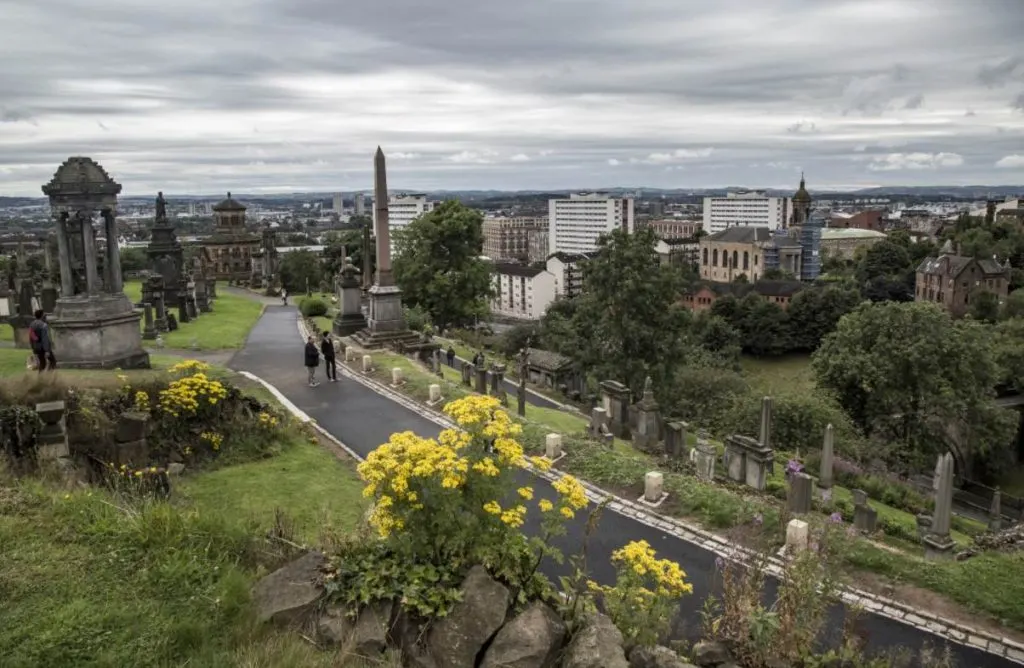One of the most prominent attractions in the most populous city in Scotland is the final resting place of thousands of people. The dead overlooks the city and this area has become a popular landmark in Glasgow as well.
Let’s take a closer look at some of the most interesting facts about the Glasgow Necropolis, an intriguing place in the heart of the city.
1. It’s located on a hill just east of the oldest building in Glasgow
The Glasgow Necropolis is a large cemetery that covers an area of 15 hectares (37 acres), right in the historical heart of the city. It’s situated on a prominent hill just east of Glasgow Cathedral.
This means it overlooks the oldest building in the city that was dedicated to the patron saint and presumed founder of Glasgow, Saint Mungo.
The cemetery has a remarkable layout typical of the Victorian era in which it was constructed, full of winding paths that lead to the summit of the hill. This is a sheer contrast to the well-organized modern-day cemeteries.

2. It was modeled on an extremely popular necropolis in Paris
Even though the problem of a lack of space in Glasgow cemeteries already existed in the early 19th century, the idea to build a necropolis like the one we see today wasn’t a common solution.
The main reason why it was built was because of the opening of the world-famous Père Lachaise Cemetery in Paris, the most-visited necropolis in the world today.
The process wasn’t straightforward during these days but the Merchants’ House of Glasgow started pushing the idea in 1831. A la was subsequently passed the following year called the “Cemeteries Act” of 1832.
This not only resulted in the fact that burials for profit were allowed, but also that the Glasgow Necropolis was established in 1833.
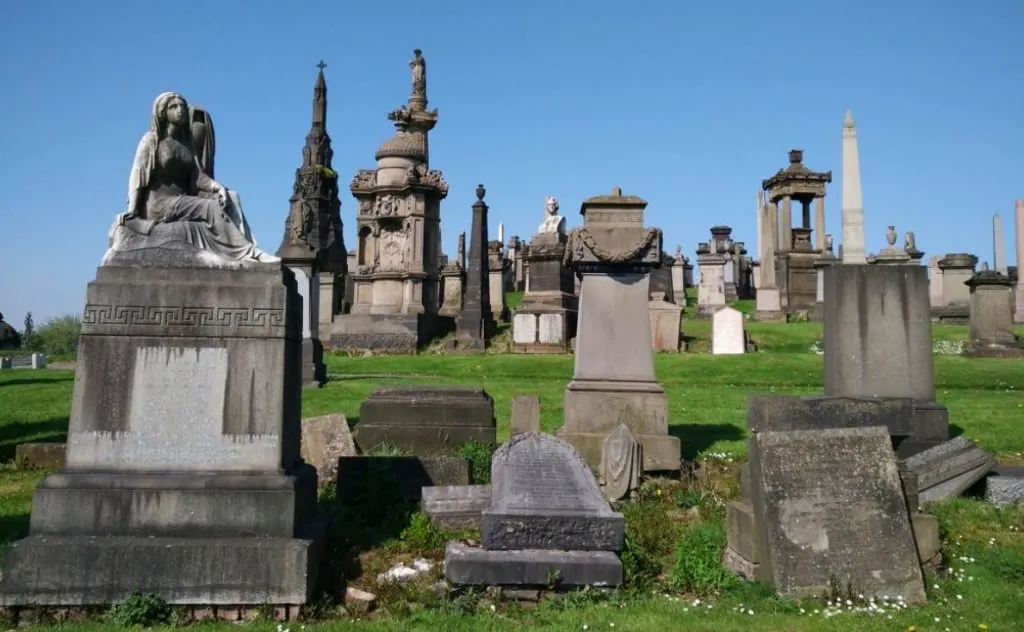
3. A Jewish cemetery on this location predates the necropolis

Even though the Necropolis was officially established in the year 1833, the Jews in Glasgow had already been awarded a section of the grounds a year earlier.
This section was initially located just outside of the necropolis’ boundaries because Christians and Jews weren’t allowed to be buried together. This section is an integral part of the necropolis today.
The burials here started in 1832 and lasted until 1855 when this section of the necropolis was deemed full and another cemetery was opened for Jews known as the “Eastern Necropolis.”.
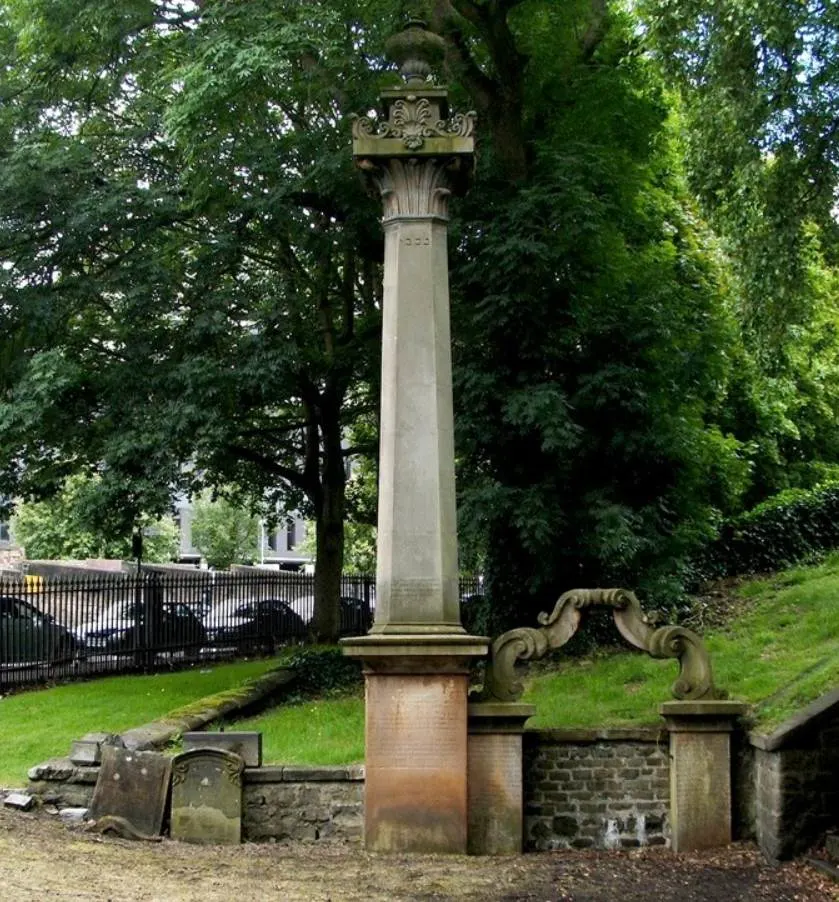
4. The monument on top of the hill dates back to 1825
The hill just east of Glasgow Cathedral has always been a prominent natural landmark in Glasgow. That’s why it was decorated with a monument that preceded the establishment of the necropolis in this location.
This monument is a column topped with a statue of the leader of the Scottish Reformation in the 16th century named John Knox (1514-1572).
He was also the founder of the Presbyterian Church in the country and a memorial in honor was erected on top of the hill in 1825, about 8 years before the first burials at the necropolis began.
5. Most of the largest monuments are located near the summit of the hill
Today, the column dedicated to John Knox finds itself standing right in the middle of all of the biggest monuments of the necropolis. That’s because most of these are located near the summit of the hill.
We’re not sure whether or not this was the original idea when erecting the monument dedicated to John Knox, but it now finds itself surrounded by the final resting place of over 50,000 people.
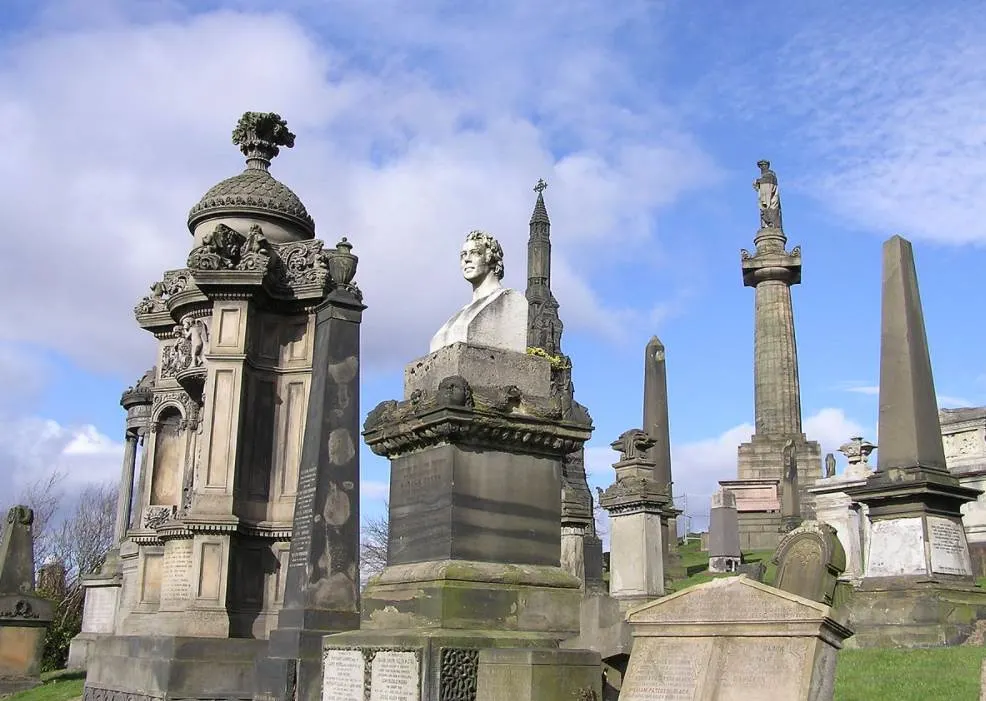
6. The bridge to access the necropolis was named after a bridge in Venice
The location of modern-day Wishart Street just west of the necropolis used to be the place that the Molendinar Burn flowed. This was the location that Saint Mungo founded the original church in Glasgow in the 6th century.
The presence of this small stream also meant that a bridge had to be constructed to reach the necropolis.
One of the architects that designed this bridge was David Hamilton, one of the most renowned architects in the history of Glasgow who also designed the Royal Exchange Building (now the Gallery of Modern Art) and the Nelson Monument at Glasgow Green.
This bridge was named the “Bridge of Sighs,” a reference to the Bridge of Sighs in Venice. The name of the bridge in the Italian city refers to the final view that prisoners saw of Venice, while the one in Glasgow refers to the route of the funeral procession towards the burial ground.
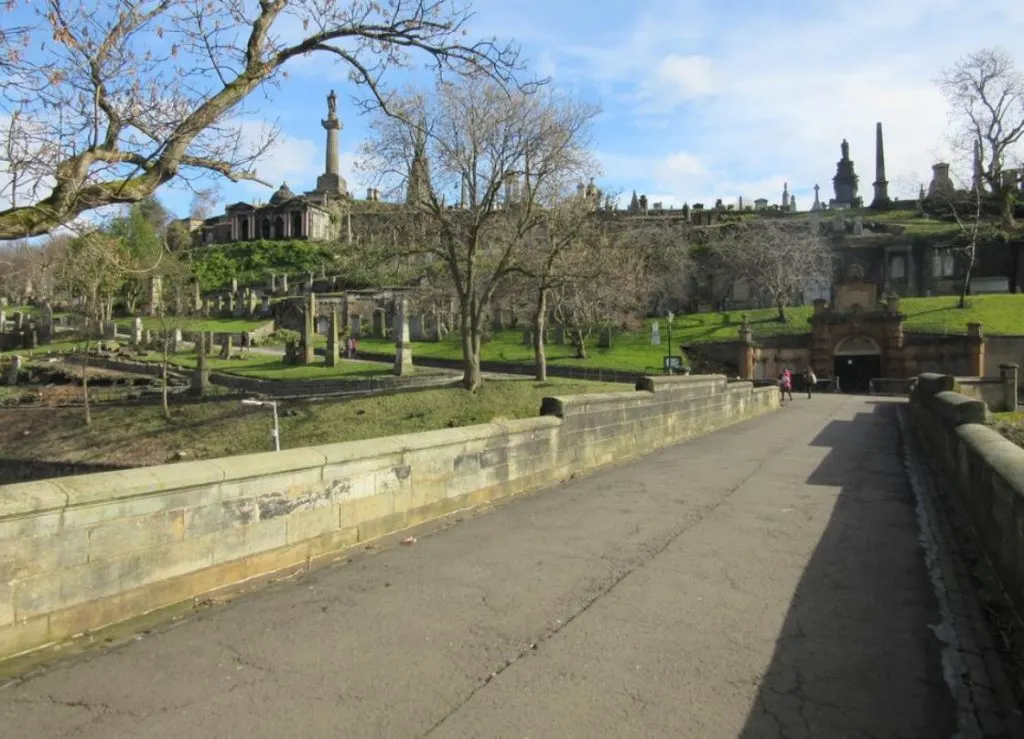
7. The entrance of the necropolis was completed in 1838
The Bridge of Sighs was completed in 1836 and leads towards the entrance of the necropolis. This entrance features ornate gates that were completed just two years later in 1838.
The construction of these decorated gates also meant that the bridge became the only way to access the cemetery. 3 memorials were built between the bridge and the entrance of the necropolis later:
- Memorial to still-born children.
- Memorial to the Korean War.
- Memorial to Glaswegian recipients of the Victoria Cross.
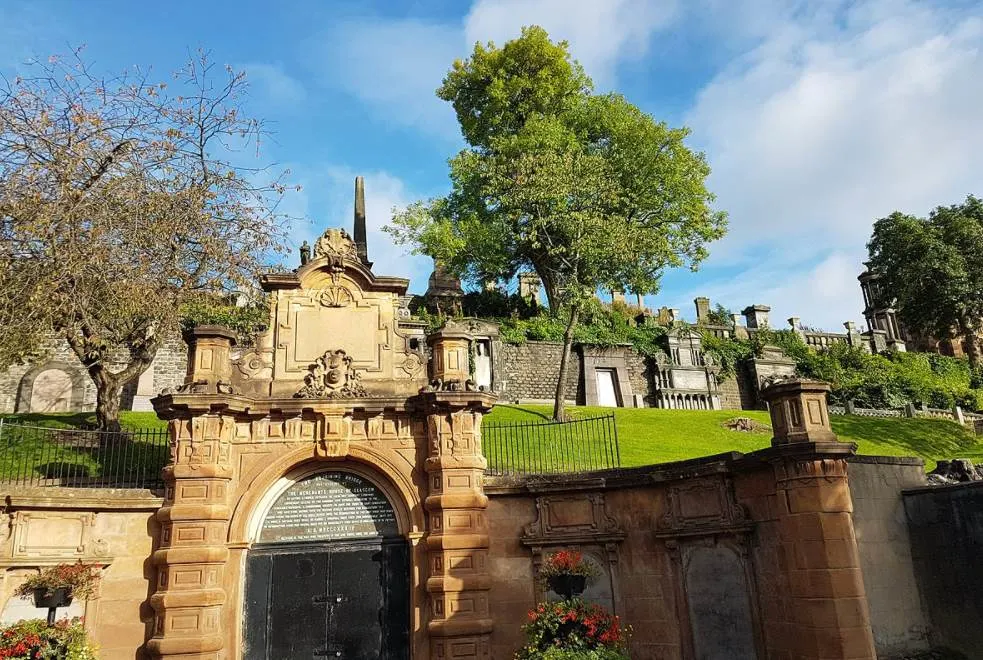
8. The Glasgow Necropolis features over 3,500 monuments
The Glasgow Necropolis has been described as a “City of the Dead.” This is pretty much the general feeling you get when you walk around this fascinating place.
Even though most of the 50,000 graves are unmarked, a common tradition during the Victorian era, there are over 3,500 monuments and memorials in the cemetery that feature a detailed description of who was buried there.
Many of the most prominent people in the history of Glasgow have an elaborately decorated mausoleum here. As Glasgow-born comedian Billy Connely once said: “Glasgow’s a bit like Nashville, Tennessee: it doesn’t care much for the living, but it looks after the dead.”
